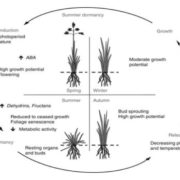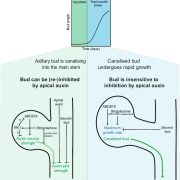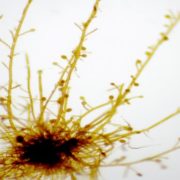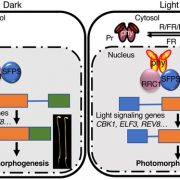Review. Fine-tuning timing: Natural variation informs the switch to flowering in Arabidopsis thaliana ($)
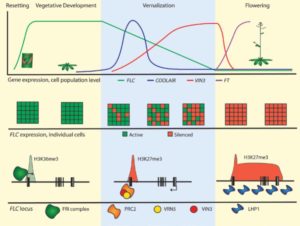 The transition from vegetative growth to a flower-producing reproductive state is highly regulated by environmental cues. The model plant Arabidopsis thaliana has a wide distribution throughout different habitats, so each accession has different adaptations strategies. One of the major factors that varies between accessions is the requirement and response to long periods of cold before flowering (vernalization). In this review, Bloomer and Dean focus on the two flowering repressor genes where the majority of the natural variations have been mapped: FRIGIDA (FRI) and FLOWERING LOCUS C (FLC). They describe how FLC is regulated through plant development, first by upregulation via FRI at the seed stage followed by a gradual down-regulation at the beginning of vernalization mediated by FLC antisense RNA transcripts and later by a switch-off in a cell-by-cell manner due to changes in epigenetic marks across the FLC gene. The authors conclude by observing that many species in the Brassicaceae family (like broccoli, kale, and Brussels sprouts among others) share the involvement of FLC orthologs in vernalization, and that understanding of this gene and its complex regulation has enhanced our ability to manipulate flowering time in these crops. (Summary by Aime Jaskolowski) J. Exp. Bot. 10.1093/jxb/erx270
The transition from vegetative growth to a flower-producing reproductive state is highly regulated by environmental cues. The model plant Arabidopsis thaliana has a wide distribution throughout different habitats, so each accession has different adaptations strategies. One of the major factors that varies between accessions is the requirement and response to long periods of cold before flowering (vernalization). In this review, Bloomer and Dean focus on the two flowering repressor genes where the majority of the natural variations have been mapped: FRIGIDA (FRI) and FLOWERING LOCUS C (FLC). They describe how FLC is regulated through plant development, first by upregulation via FRI at the seed stage followed by a gradual down-regulation at the beginning of vernalization mediated by FLC antisense RNA transcripts and later by a switch-off in a cell-by-cell manner due to changes in epigenetic marks across the FLC gene. The authors conclude by observing that many species in the Brassicaceae family (like broccoli, kale, and Brussels sprouts among others) share the involvement of FLC orthologs in vernalization, and that understanding of this gene and its complex regulation has enhanced our ability to manipulate flowering time in these crops. (Summary by Aime Jaskolowski) J. Exp. Bot. 10.1093/jxb/erx270


